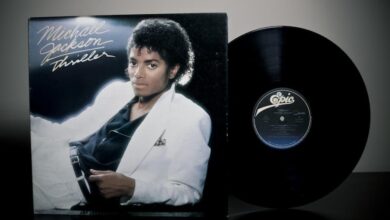Shelley Fabares – Johnny Angel
“Johnny Angel” is a classic pop song performed by American actress and singer Shelley Fabares. It was released in 1962 as a single from her debut studio album, and it quickly climbed the charts to become a number one hit in the United States. The song’s success was remarkable, considering that Shelley Fabares was primarily known at the time for her role on the sitcom “The Donna Reed Show,” where she played the character Mary Stone. The crossover from television to music was not uncommon at the time, but few were able to achieve the level of success that Fabares did with “Johnny Angel.”
The song was written by Lyn Duddy and Lee Pockriss, both of whom have had success in the music industry with various hits. “Johnny Angel” is characterized by its catchy melody and the sweet, innocent longing conveyed in its lyrics, which tell the story of a young girl’s infatuation with a boy named Johnny. The arrangement is simple yet effective, with a doo-wop influence that was very popular during that era. This appealing blend of pop and doo-wop made it resonate with a wide audience, particularly teenagers.
The lyrics of “Johnny Angel” convey a sense of yearning and unrequited love, which was a common theme in the music of the early 1960s. The protagonist of the song dreams of winning the affection of Johnny, despite feeling invisible to him. This theme of adolescent crushes and heartache struck a chord with listeners, contributing to the song’s popularity. Fabares’ delivery of the lyrics enhances the song’s emotional appeal – her voice, while light and girlish, perfectly captures the innocent desire and hopefulness of the song’s narrative.
Shelley Fabares did indeed perform “Johnny Angel” during her appearances on “The Donna Reed Show,” where the song was integrated into various episodes, further boosting its popularity. These performances were pivotal in linking her television persona with her musical endeavors, helping fans of the show connect with her musical career. Live performances outside the show were also a part of Fabares’ promotional activities, but the integration of her acting and singing was key to the song’s widespread recognition.
The impact of “Johnny Angel” extended beyond just Fabares’ career. It became an emblematic song of its time, representing the innocent, romanticized ideas of teenage love prevalent in early 1960s America. Its success opened doors for other television actors looking to transition into music and influenced the pop culture landscape by blurring the lines between television and music media. With its success, the song also set a precedent for songs being popularized through television shows, a model that would continue to evolve in the decades to follow.
In terms of Fabares’ music career, “Johnny Angel” was her most significant hit, and it remains the song she is best known for. While she released other songs and albums, none achieved the same level of success. The song’s iconic status has persisted through the years, earning it a place in the canon of early 1960s pop and allowing it to be remembered nostalgically by those who lived through that era, as well as being discovered anew by subsequent generations.
Culturally, “Johnny Angel” is indicative of the period’s values and musical aesthetics. Its enduring popularity highlights the universal experience of young love and infatuation, themes that are timeless and continue to resonate with audiences today. The song has been featured in numerous compilations of the best music from the 1960s, and its influence can be seen in the way pop music continued to develop over that decade, particularly in the way it addressed the emotions and experiences of young people.
Reflecting on Shelley Fabares’ legacy, “Johnny Angel” remains a defining moment in her career and a touchstone of 1960s pop music. It was a pivotal song that successfully combined the power of television and music, showcasing Fabares as a versatile performer who could capture the hearts of both television and music audiences. The song’s recurring popularity in radio and nostalgia circuits continues to underscore its significance and charm within American music history.




